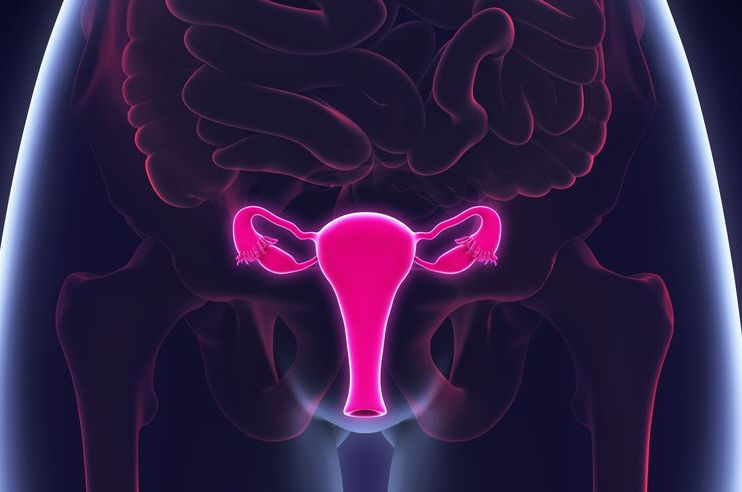Treatment of Ectopic Pregnancy
An early ectopic pregnancy without unstable bleeding is most often treated with a medication called methotrexate, which stops cell growth and dissolves existing cells. The medication is given by injection. It’s very important that the diagnosis of ectopic pregnancy is certain before receiving this treatment.
From fertilization to delivery, pregnancy requires a number of steps in a woman’s body. One of these steps is when a fertilized egg travels to the uterus to attach itself. In the case of an ectopic pregnancy, the fertilized egg doesn’t attach to the uterus. Instead, it may attach to the fallopian tube, abdominal cavity, or cervix.
While a pregnancy test may reveal a woman is pregnant, a fertilized egg can’t properly grow anywhere other than the uterus. According to the American Academy of Family Physicians (AAFP), ectopic pregnancies occur in about 1 out of every 50 pregnancies (20 out of 1,000).
An untreated ectopic pregnancy can be a medical emergency. Prompt treatment reduces your risk of complications from the ectopic pregnancy, increases your chances for future, healthy pregnancies, and reduces future health complications.
What causes an ectopic pregnancy?
The cause of an ectopic pregnancy isn’t always clear. In some cases, the following conditions have been linked with an ectopic pregnancy:
inflammation and scarring of the fallopian tubes from a previous medical condition, infection, or surgery
hormonal factors
genetic abnormalities
birth defects
medical conditions that affect the shape and condition of the fallopian tubes and reproductive organs
Your doctor may be able to give you more specific information about your condition.
Who is at risk for an ectopic pregnancy?
All sexually active women are at some risk for an ectopic pregnancy. Risk factors increase with any of the following:
maternal age of 35 years or older
history of pelvic surgery, abdominal surgery, or multiple abortions
history of pelvic inflammatory disease (PID)
history of endometriosis
conception occurred despite tubal ligation or intrauterine device (IUD)
conception aided by fertility drugs or procedures
smoking
history of ectopic pregnancy
history of sexually transmitted diseases (STDs), such as gonorrhea or chlamydia
having structural abnormalities in the fallopian tubes that make it hard for the egg to travel
If you have any of the above risk factors, talk to your doctor. You can work with your doctor or a fertility specialist to minimize the risks for future ectopic pregnancies.
What are the symptoms of an ectopic pregnancy?
Nausea and breast soreness are common symptoms in both ectopic and uterine pregnancies. The following symptoms are more common in an ectopic pregnancy and can indicate a medical emergency:
sharp waves of pain in the abdomen, pelvis, shoulder, or neck
severe pain that occurs on one side of the abdomen
light to heavy vaginal spotting or bleeding
dizziness or fainting
rectal pressure
You should contact your doctor or seek immediate treatment if you know that you’re pregnant and have any of these symptoms.
Diagnosing an ectopic pregnancy
If you suspect you may have an ectopic pregnancy, see your doctor immediately. Ectopic pregnancies can’t be diagnosed from a physical exam. However, your doctor may still perform one to rule out other factors.
Another step to diagnosis is a transvaginal ultrasound. This involves inserting a special wand-like instrument into your vagina so that your doctor can see if a gestational sac is in the uterus.
Your doctor may also use a blood test to determine your levels of hCG and progesterone. These are hormones that are present during pregnancy. If these hormone levels start to decrease or stay the same over the course of a few days and a gestational sac isn’t present in an ultrasound, the pregnancy is likely ectopic.
If you’re having severe symptoms, such as significant pain or bleeding, there may not be enough time to complete all these steps. The fallopian tube could rupture in extreme cases, causing severe internal bleeding. Your doctor will then perform an emergency surgery to provide immediate treatment.
Treating ectopic pregnancy
Ectopic pregnancies aren’t safe for the mother. Also, the embryo won’t be able to develop to term. It’s necessary to remove the embryo as soon as possible for the mother’s immediate health and long-term fertility. Treatment options vary depending on the location of the ectopic pregnancy and its development.
Medication
Your doctor may decide that immediate complications are unlikely. In this case, your doctor can prescribe several medications that could keep the ectopic mass from bursting. According to the AAFP, one common medication for this is methotrexate (Rheumatrex).
Methotrexate is a drug that stops the growth of rapidly dividing cells, such as the cells of the ectopic mass. If you take this medication, your doctor will give it to you as an injection. You should also get regular blood tests to ensure that the drug is effective. When effective, the medication will cause symptoms that are similar to that of a miscarriage. These include:
cramping
bleeding
the passing of tissue
Further surgery is rarely required after this occurs. Methotrexate doesn’t carry the same risks of fallopian tube damage that come with surgery. You won’t be able to get pregnant for several months after taking this medication, however.
Surgery
Many surgeons suggest removing the embryo and repairing any internal damage. This procedure is called a laparotomy. Your doctor will insert a small camera through a small incision to make sure they can see their work. The surgeon then removes the embryo and repairs any damage to the fallopian tube.
If the surgery is unsuccessful, the surgeon may repeat a laparotomy, this time through a larger incision. Your doctor may also need to remove the fallopian tube during surgery if it’s damaged.
Home care
Your doctor will give you specific instructions regarding the care of your incisions after surgery. The chief goals are to keep your incisions clean and dry while they heal. Check them daily for infection signs, which could include:
bleeding that won’t stop
excessive bleeding
foul-smelling drainage from the site
hot to the touch
redness
swelling
You can expect some light vaginal bleeding and small blood clots after surgery. This can occur up to six weeks after your procedure. Other self-care measures you can take include:
don’t lift anything heavier than 10 pounds
drink plenty of fluids to prevent constipation
pelvic rest, which means refraining from sexual intercourse, tampon use, and douching
rest as much as possible the first week postsurgery, and then increase activity in the next weeks as tolerated
Always notify your doctor if your pain increases or you feel something is out of the ordinary.
Prevention
Prediction and prevention aren’t possible in every case. You may be able to reduce your risk through good reproductive health maintenance. Have your partner wear a condom during sex and limit your number of sexual partners. This reduces your risk for STDs, which can cause PID, a condition that can cause inflammation in the fallopian tubes.
Maintain regular visits with your doctor, including regular gynecological exams and regular STD screenings. Taking steps to improve your personal health, such as quitting smoking, is also a good preventive strategy.
What’s the long-term outlook?
The long-term outlook after an ectopic pregnancy depends on whether it caused any physical damage. Most people who have ectopic pregnancies go on to have healthy pregnancies. If both fallopian tubes are still intact, or even just one, the egg can be fertilized as normal. However, if you have a preexisting reproductive problem, that can affect your future fertility and increase your risk of future ectopic pregnancy. This is especially the case if the preexisting reproductive problem has previously led to an ectopic pregnancy.
Surgery may scar the fallopian tubes, and it can make future ectopic pregnancies more likely. If the removal of one or both fallopian tubes is necessary, speak to your doctor about possible fertility treatments. An example is in vitro fertilization that involves implanting a fertilized egg into the uterus.
Pregnancy loss, no matter how early, can be devastating. You can ask your doctor if there are available support groups in the area to provide further support after loss. Take care of yourself after this loss through rest, eating healthy foods, and exercising when possible. Give yourself time to grieve.
Remember that many women go on to have healthy pregnancies and babies. When you’re ready, talk to your doctor about ways you can ensure that your future pregnancy is a healthy one.

Lorem ipsum dolor sit amet, consectetur adipiscing elit. Phasellus ac aliquam velit. Phasellus dapibus cursus erat, quis consequat urna efficitur non. Phasellus cursus, erat quis mollis lobortis, urna risus hendrerit metus, id dictum metus purus vel magna. Nulla non purus sit amet arcu convallis egestas
Lorem ipsum dolor sit amet, consectetur adipiscing elit. Phasellus ac aliquam velit. Phasellus dapibus cursus erat, quis consequat urna efficitur non. Phasellus cursus, erat quis mollis lobortis, urna risus hendrerit metus, id dictum metus purus vel magna. Nulla non purus sit amet arcu convallis egestas
Lorem ipsum dolor sit amet, consectetur adipiscing elit. Phasellus ac aliquam velit. Phasellus dapibus cursus erat, quis consequat urna efficitur non. Phasellus cursus, erat quis mollis lobortis, urna risus hendrerit metus, id dictum metus purus vel magna. Nulla non purus sit amet arcu convallis egestas

COSMETIC SURGERY
Lorem ipsum dolor sit amet, consectetur adipiscing elit. Ut elit tellus, luctus nec ullamcorper mattis, pulvinar dapibus leo.

COSMETIC SURGERY
Lorem ipsum dolor sit amet, consectetur adipiscing elit. Ut elit tellus, luctus nec ullamcorper mattis, pulvinar dapibus leo.

COSMETIC SURGERY
Lorem ipsum dolor sit amet, consectetur adipiscing elit. Ut elit tellus, luctus nec ullamcorper mattis, pulvinar dapibus leo.
